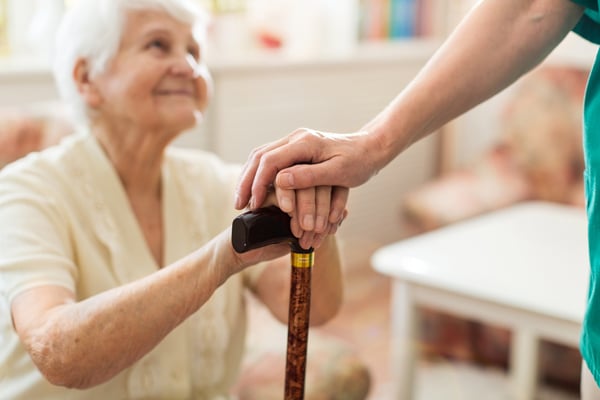It’s no surprise that losing the ability to communicate effectively can be one of the most frustrating and difficult problems for people with dementia and the people who care for them. Communication difficulties can often lead to anxiety and depression or an increase in agitated behaviour.
There have been great improvements in the understanding of communication difficulties in dementia care. We have learned not to argue, to use shorter sentences and simple language, not to offer too many choices and to minimise distractions. More recently more creative ways have been encouraged to facilitate better communication using music, dance and other activities like gardening and nature walks. The results have been amazing with many heart-warming stories in the media of people with dementia expressing emotions previously hidden with displays of affection, improvements in conversation and increased social interaction.
According to research 93% of all human communication is non-verbal. With 55% being body language and 38% being tone and pitch of the voice, leaving only 7% for words.
We worry too much about the words people with dementia say. They say things that aren’t true, make false accusations, don’t make sense and repeat themselves. People with dementia retain feelings and emotions even if they don’t understand the words being spoken. Perhaps we should pay more attention to the emotions they are displaying in order to work out what they are trying to communicate.
Have you ever watched 2 people with dementia chatting away merrily and getting on famously and then realised that their conversation makes no sense? They seem to have a mutual understanding, mostly relying on non-verbal communication, smiling, laughing, nodding, mimicking each other and maintaining eye contact. We can learn from this.
Non-verbal communication includes body language, facial expressions, tone and inflection of voice, eye contact, gestures and even how we dress. We can go a long way to gauging someone’s mood or state of mind by observing these things and then adjust our interactions accordingly to get the best possible outcome.
We also need to be aware of our own non-verbal communication when interacting with someone with dementia as they will be sensitive to this. Beware of folding your arms or standing over someone with your hands on your hips. They will pick up signals that you are impatient, in a hurry or frustrated. Remember your tone of voice. If you sigh “what’s up Albert?” or roll your eyes at another member of staff because it’s the tenth time he has said he wants to go home, he will pick up that you are annoyed and feel like a nuisance, increasing his anxiety which may result in further agitated behaviour. Instead, get down to his level, smile, make eye contact and see if there are any clues to the emotion he is trying to communicate to help you come up with a solution.
Be patient, give extra time to consider both your own and your residents non-verbal messages to bring out the best in someone, facilitate better communication and build trusting relationships. Communication is essential to maintain our quality of life, so any way we can make it better has got to be worth it.







